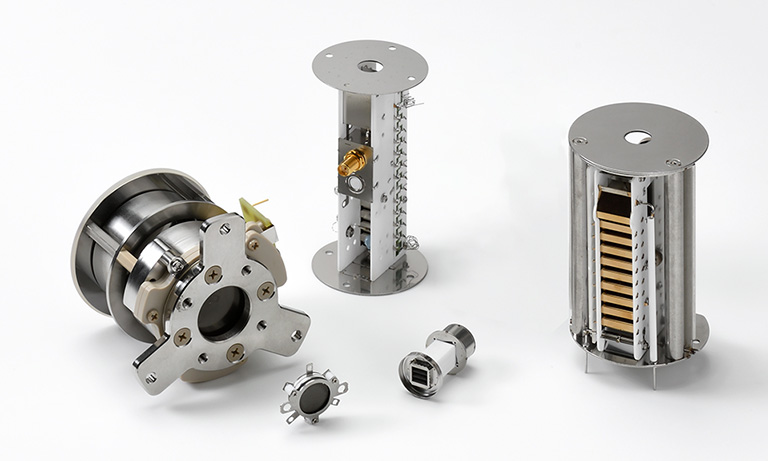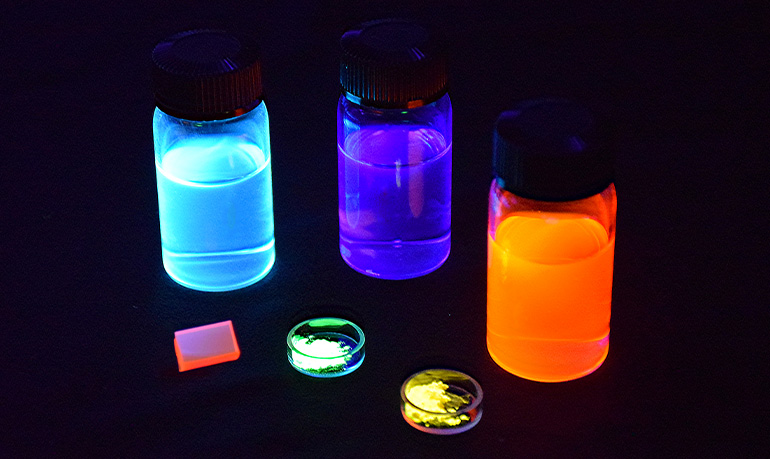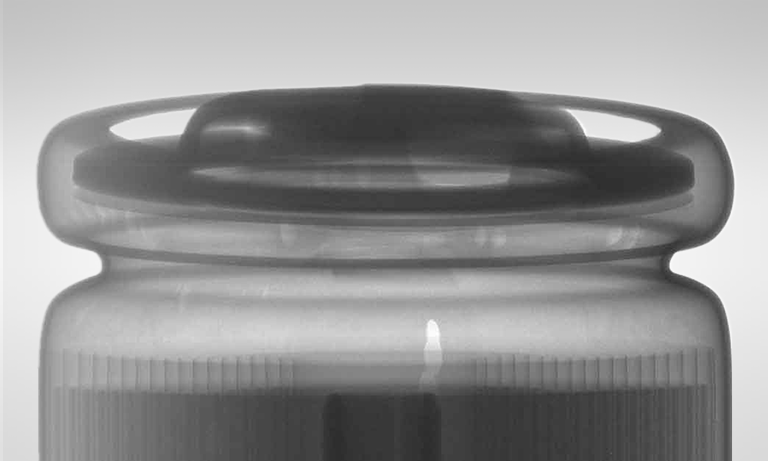United Kingdom (EN)
Select your region or country.
RoHS-compliant infrared (IR) LEDs and detectors boost performance and ease the manufacture of capnography monitors
- Hamamatsu Corporation
Today’s medical device OEMs look to improve performance levels and extend operating lifetimes in even smaller form factors. As medical device product lifecycles shrink, the need for innate RoHS compliance at the component level helps speed time to market. Given these challenges, OEMs are turning to safe, high-performance semiconductor technologies to replace traditional lamps for fast, accurate absorption analysis without the need for cooling. Today’s capnography device engineers spec in the latest MIR LED technologies to deliver on promises of high sensitivity for real-time, precise CO2 detection.
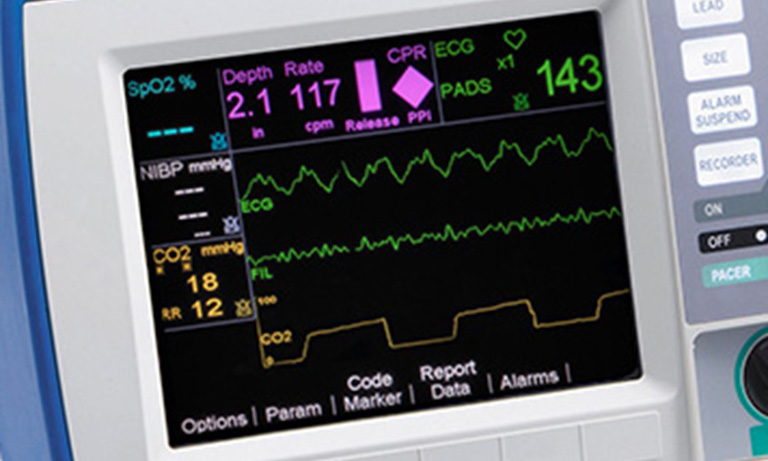
Optical CO2 measurement is best done in the mid-infrared
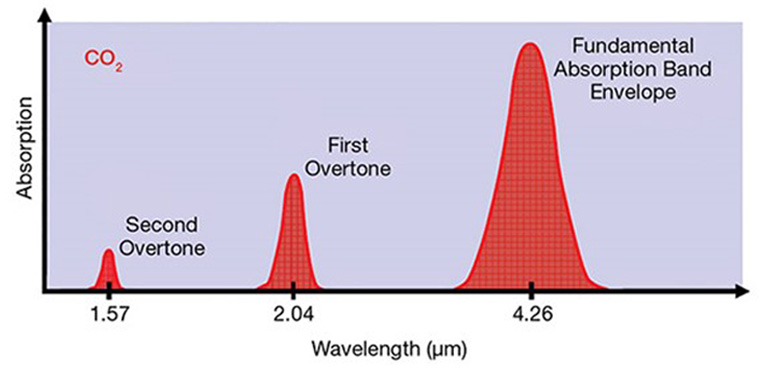
Carbon dioxide has absorption bands in the near-IR, but the band near 4.26 µm is orders of magnitude stronger.
What characteristics matter the most when it comes to mid-IR LEDs and detectors?
Sensitivity of infrared LEDs and detectors
Since capnography monitors measure levels of carbon dioxide absorption, the data significantly affects patient treatment and outcomes. It’s critical for the provider to receive accurate, real-time results to properly assess the patient’s condition. Precision, which equates to a lower margin of error, relies on the sensitivity levels of the detector inside the monitor. Maximum precision levels require mid-IR LEDs to deliver 3+ micron light and achieve parts per million sensitivity levels (assuming proper calibration).
Managing temperature
OEMs turn to today’s mid-IR detectors for sensitivity, but many current detectors implement cooling to mitigate temperature variance factors. Future instruments would benefit from removing cooling systems and integrating detectors that resist temperature variance. InAsSb detectors provide just that. Removing cooling would save on cost, power consumption, and form factor.
Stability + reliability
Traditional lamps are a common source of IR light, but they come with drawbacks. When it comes to gas analysis, lamps are inefficient because they provide wide IR emissions and not just the absorption wavelengths. LEDs can center on the absorption wavelength (in this case 4.26 microns) and therefore provide higher power efficiency. Also, this efficiency drives longer lifetimes, with MIR LEDs standing to last 10k+ hours of operation. Lamps also are not known to modulate quickly and commonly have warm-up times. MIR LEDs respond on the order of microseconds and can provide much higher measurement rates.
The chart below illustrates how Hamamatsu’s line of LEDs performs as a function of input current.
L15895 series
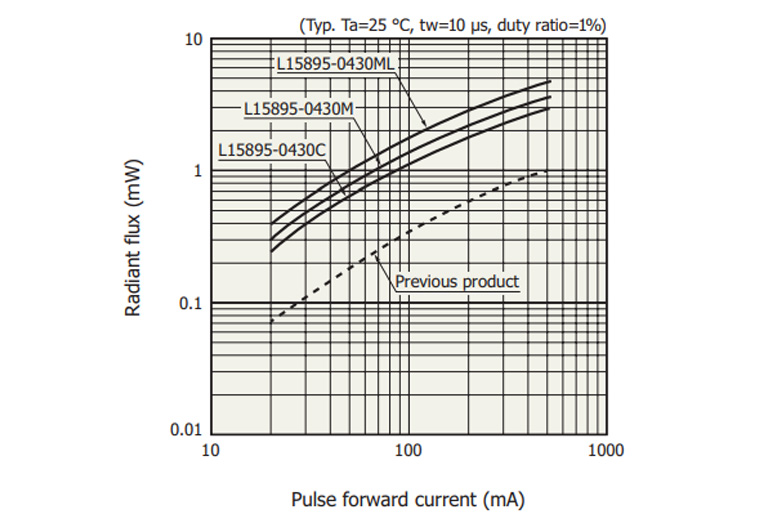
RoHS compliance
While infrared detectors are highly stable and perform as needed, they often contain hazardous substances like lead, cadmium, and mercury. Medical device OEMs must meet stringent compliance with a gamut of regulations, so designing products with RoHS-compliant components like InAsSb helps avoid lengthy permitting processes, ultimately reducing time to market.
Technologies for efficient CO2 absorption measurement
As MIR LEDs become more powerful and efficient sources, an emerging generation of compact MIR detectors offers effective performance. Hamamatsu’s line of mid-IR LEDs features high peak power/output, high reliability, and low power consumption for the most efficient CO2 absorption measurement. Flexible configurations meet your needs as detectors are available as an SMD (surface mount device) or mounted to a PCB board.
If you need help optimizing the performance of your next capnography monitor, turn to Hamamatsu. Compare our specs and talk to our experts today.
Related topic
Learn more about how our IR detectors and IR light sources are used for gas analysis.
- Confirmation
-
It looks like you're in the . If this is not your location, please select the correct region or country below.
You're headed to Hamamatsu Photonics website for GB (English). If you want to view an other country's site, the optimized information will be provided by selecting options below.
In order to use this website comfortably, we use cookies. For cookie details please see our cookie policy.
- Cookie Policy
-
This website or its third-party tools use cookies, which are necessary to its functioning and required to achieve the purposes illustrated in this cookie policy. By closing the cookie warning banner, scrolling the page, clicking a link or continuing to browse otherwise, you agree to the use of cookies.
Hamamatsu uses cookies in order to enhance your experience on our website and ensure that our website functions.
You can visit this page at any time to learn more about cookies, get the most up to date information on how we use cookies and manage your cookie settings. We will not use cookies for any purpose other than the ones stated, but please note that we reserve the right to update our cookies.
1. What are cookies?
For modern websites to work according to visitor’s expectations, they need to collect certain basic information about visitors. To do this, a site will create small text files which are placed on visitor’s devices (computer or mobile) - these files are known as cookies when you access a website. Cookies are used in order to make websites function and work efficiently. Cookies are uniquely assigned to each visitor and can only be read by a web server in the domain that issued the cookie to the visitor. Cookies cannot be used to run programs or deliver viruses to a visitor’s device.
Cookies do various jobs which make the visitor’s experience of the internet much smoother and more interactive. For instance, cookies are used to remember the visitor’s preferences on sites they visit often, to remember language preference and to help navigate between pages more efficiently. Much, though not all, of the data collected is anonymous, though some of it is designed to detect browsing patterns and approximate geographical location to improve the visitor experience.
Certain type of cookies may require the data subject’s consent before storing them on the computer.
2. What are the different types of cookies?
This website uses two types of cookies:
- First party cookies. For our website, the first party cookies are controlled and maintained by Hamamatsu. No other parties have access to these cookies.
- Third party cookies. These cookies are implemented by organizations outside Hamamatsu. We do not have access to the data in these cookies, but we use these cookies to improve the overall website experience.
3. How do we use cookies?
This website uses cookies for following purposes:
- Certain cookies are necessary for our website to function. These are strictly necessary cookies and are required to enable website access, support navigation or provide relevant content. These cookies direct you to the correct region or country, and support security and ecommerce. Strictly necessary cookies also enforce your privacy preferences. Without these strictly necessary cookies, much of our website will not function.
- Analytics cookies are used to track website usage. This data enables us to improve our website usability, performance and website administration. In our analytics cookies, we do not store any personal identifying information.
- Functionality cookies. These are used to recognize you when you return to our website. This enables us to personalize our content for you, greet you by name and remember your preferences (for example, your choice of language or region).
- These cookies record your visit to our website, the pages you have visited and the links you have followed. We will use this information to make our website and the advertising displayed on it more relevant to your interests. We may also share this information with third parties for this purpose.
Cookies help us help you. Through the use of cookies, we learn what is important to our visitors and we develop and enhance website content and functionality to support your experience. Much of our website can be accessed if cookies are disabled, however certain website functions may not work. And, we believe your current and future visits will be enhanced if cookies are enabled.
4. Which cookies do we use?
There are two ways to manage cookie preferences.
- You can set your cookie preferences on your device or in your browser.
- You can set your cookie preferences at the website level.
If you don’t want to receive cookies, you can modify your browser so that it notifies you when cookies are sent to it or you can refuse cookies altogether. You can also delete cookies that have already been set.
If you wish to restrict or block web browser cookies which are set on your device then you can do this through your browser settings; the Help function within your browser should tell you how. Alternatively, you may wish to visit www.aboutcookies.org, which contains comprehensive information on how to do this on a wide variety of desktop browsers.
5. What are Internet tags and how do we use them with cookies?
Occasionally, we may use internet tags (also known as action tags, single-pixel GIFs, clear GIFs, invisible GIFs and 1-by-1 GIFs) at this site and may deploy these tags/cookies through a third-party advertising partner or a web analytical service partner which may be located and store the respective information (including your IP-address) in a foreign country. These tags/cookies are placed on both online advertisements that bring users to this site and on different pages of this site. We use this technology to measure the visitors' responses to our sites and the effectiveness of our advertising campaigns (including how many times a page is opened and which information is consulted) as well as to evaluate your use of this website. The third-party partner or the web analytical service partner may be able to collect data about visitors to our and other sites because of these internet tags/cookies, may compose reports regarding the website’s activity for us and may provide further services which are related to the use of the website and the internet. They may provide such information to other parties if there is a legal requirement that they do so, or if they hire the other parties to process information on their behalf.
If you would like more information about web tags and cookies associated with on-line advertising or to opt-out of third-party collection of this information, please visit the Network Advertising Initiative website http://www.networkadvertising.org.
6. Analytics and Advertisement Cookies
We use third-party cookies (such as Google Analytics) to track visitors on our website, to get reports about how visitors use the website and to inform, optimize and serve ads based on someone's past visits to our website.
You may opt-out of Google Analytics cookies by the websites provided by Google:
https://tools.google.com/dlpage/gaoptout?hl=en
As provided in this Privacy Policy (Article 5), you can learn more about opt-out cookies by the website provided by Network Advertising Initiative:
http://www.networkadvertising.org
We inform you that in such case you will not be able to wholly use all functions of our website.
Close











